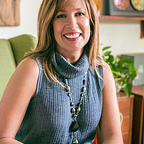A Climate of Curiosity
[This article originally appeared in the Ecological Farmers Association of Ontario November/December 2019 print newsletter, in advance of EFAO’s annual conference at which I spoke. The theme of the conference was “A Climate of Curiosity.”]
What will it take to grow the ecological farming movement, with its more responsible and regenerative ways of being in relationship with the land? As EFAO’s Katie Baikie and I plotted and planned my talk for the upcoming annual conference, that has been the question at the heart of our conversations. The urgency to grow the movement is pressing. And yet the obstacles can seem overwhelming and the path unclear.
I was invited to share my thoughts on this in part because of my work helping to grow the regenerative agriculture movement, nationally with Regeneration Canada and locally with the Erin Soil Health Coalition. But more broadly, I’ve spent the past two decades bringing ecological perspectives to a wide range of sectors and industries. Wherever I have been called to contribute, my work has focused on enabling people to understand how they can create the fertile conditions for life to thrive within and around their organizations or communities — in other words, how they can cultivate what I call “thrivability.”
What I can tell you is: you are not alone. Every industry is searching for ways to spread its most promising ecological approaches. In my own experience, for example, I’m involved with a global community of practice to grow the “regenerative tourism” movement. I’m engaged in similar explorations in healthcare, education and even software development. The ecological farming movement is part of a widespread urge to embrace new ways of being, new guiding principles, and new depths of relationship with the land and with each other. Indeed, the call to regeneration — to working with life instead of against it — extends to every one of us and to every aspect of our lives.
What I can also tell you is: you are special. Everyone eats food. And it’s generally illegal to leave home without fiber. Every person has a vested interest in what farmers do and how you do it. This is only becoming more acute as the world wakes up to soil’s crucial role in combatting climate change, and more.
This universal relevance and importance gives farmers an untapped convening power that will be critical to growing the ecological movement, within agriculture and beyond. In farming as in other sectors, there is always a whole ecosystem of stakeholders that either hinders or supports necessary transition. It takes a village to “raise” an ecological farmer. And if this movement is to grow, it will require coming together in ongoing conversation, shared learning and experimentation, not only with other farmers, but with other stakeholders — with the village. Convening, in a spirit and climate of curiosity, will be vital.
What I am also finding is that the living soil itself can be a powerful convener and teacher for every context, offering broadly accessible lessons in self-organization, resilience, diversity and emergence. In my years of inviting people to cultivate thrivability, I have always shared a core set of patterns and characteristics common to all living systems, from rainforests to ant colonies, from sea sponges to our own bodies, and from our organizations to our communities. In recent years, however, this work has taken on new dynamism as I’m able to point to how those patterns are present in the living soil. The example seems to feel particularly relevant to people. “When you’re faced with a decision,” I’ve started to advise, “ask yourself ‘what would soil do?’” Ultimately, the regenerative movement calls us together in a spirit of stewardship, listening for what is needed and aligning with life. This is the deeper practice of our work. And I’m finding that living soils may be our best and most universal teacher of that practice.
As the world wakes up to the vital importance of regenerating the living soil, and as its lessons prove relevant for every context, ecological farmers have a powerful opportunity to engage the broader community in shared inquiry and exploration. You, perhaps more than anyone, are in hands-on relationship with those universal patterns. You are at the epicenter of learning how to live in greater alignment with life.
And so this is the question I’ve been playing with, in calling together the village in a climate of curiosity:
What if healing the soil and healing our relationship with soil were essential to healing ourselves, our communities and our world?
What could that look like? What would that involve?
This is what I hope we can explore together at the conference in December.
